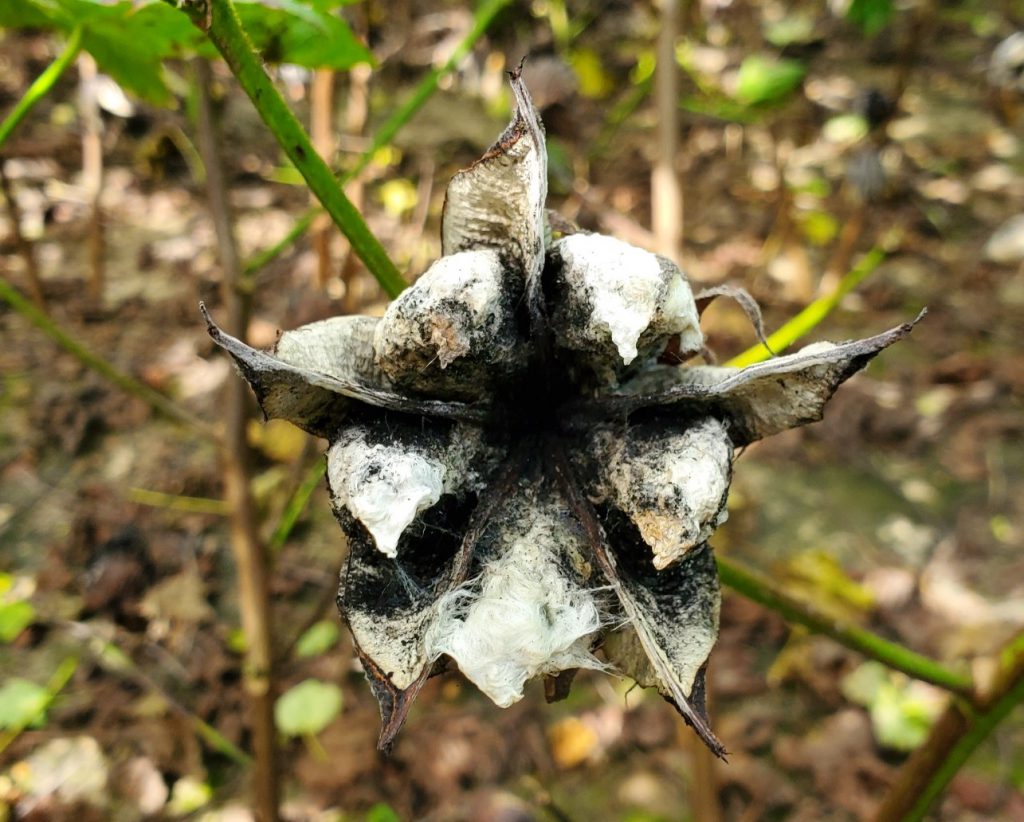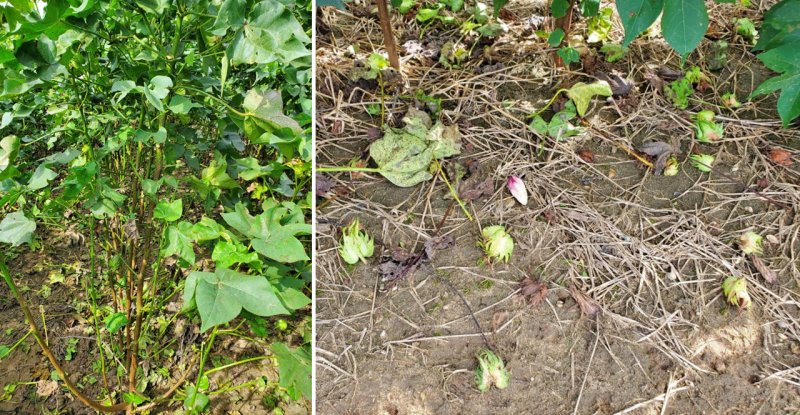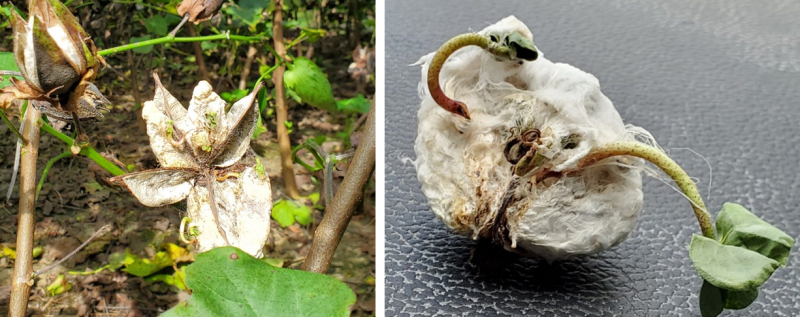The 2021 growing season has not been a good one for cotton producers in the Western Panhandle of Florida. An overabundance of rain, lack of sunshine, and poor overall conditions has led to cotton looking less than stellar. Though plants look good when whizzing by at 55 miles an hour on a highway, once you step out into the fields, you get a better look at what is really going on. When approaching this field, it looks good, with pretty decent looking leaves at the top level, but once you get past the greenery, there is reason to worry. The plant has been able to maintain green foliage because there is no need to send energy into the bolls; there aren’t many remaining. Weather conditions have not been conducive to make a good crop in this field; squares are still falling off the plant. The picture above shows more loss of squares from the plants.
–
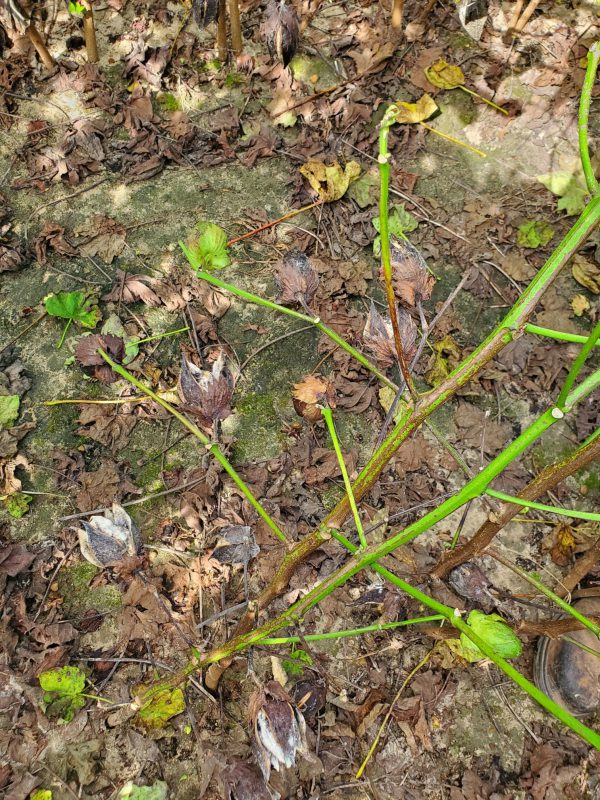
In the picture above, the field is littered with dead leaves. Unfortunately, this field has not been defoliated. Rather, the cotton has suffered from premature defoliation caused by various foliar diseases. The very few bolls remaining on the lower half of the plant are suffering from hard lock and boll rot. Boll rot can be caused by both fungi and bacteria, such as Fusarium, Diplodia, and Alternaria species. Boll rot is worse under warm and moist conditions, especially towards the end of the growing season. Though we have had a great week of sunshine and fresh air, August and September were plagued with way too much rain and saturated soils. Hardlock (when the locks of cotton don’t fluff out) is currently looking like a major problem this year. Dr. David Wright has reported from 20- 60% of the cotton is lost due to hardlock almost every year, and this year could possibly be on the higher end. Cotton pickers are generally not able to pluck off the cotton, leaving the cotton behind in the field.
–
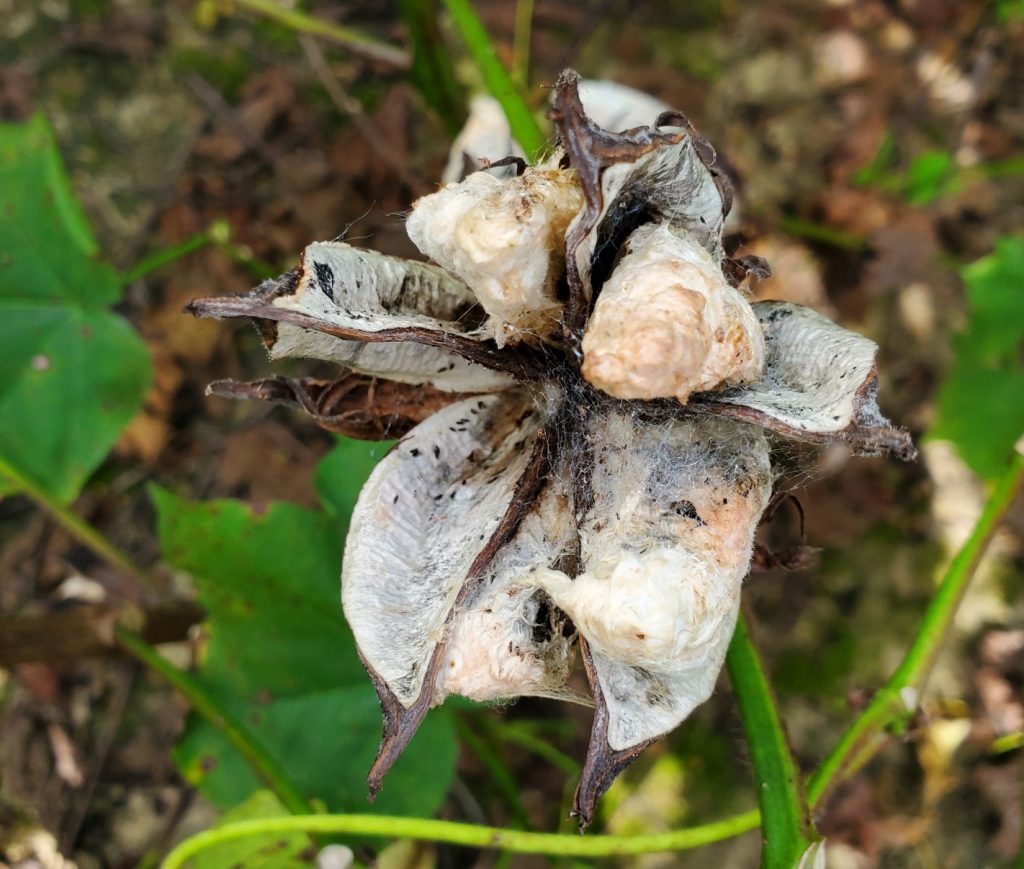
Another issue at play with cotton is the amount of damage from stinkbugs, but more so this year, plant bugs. In a recent edition of the Alabama Cotton Shorts newsletter, Dr. Scott Graham addressed the amount of damage in late August from stink bugs and plant bugs. Growers in Santa Rosa county have attempted to manage plant bugs but were still covered up in them by late August. Stinkbugs and plant bugs were actively causing problems on cotton way past their normal time of interference, so a decreased yield due to these bugs could easily result. In late planted cotton, continue to look for and manage stink bugs.
–
The excessive rainfall has not only furthered disease pressure on leaves and unopened bolls, it has hardlocked opening bolls and caused seed to germinate while still within the boll. This is something more often seen with cotton that is further along, and closer to picking, but it is being seen in September this year.
In a year where Northwest Florida hasn’t lacked for moisture, it has been hard on a crop that performs better in more arid climates. These pictures don’t reflect all the fields out there; There are healthier fields in the region, so good cotton does exist. The ugly picture below will be replaced in a month or so when I share some beautiful cotton from other areas of the Panhandle.
